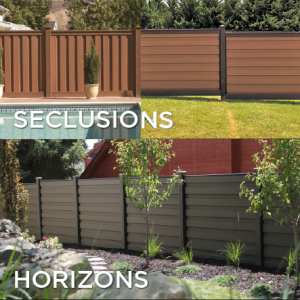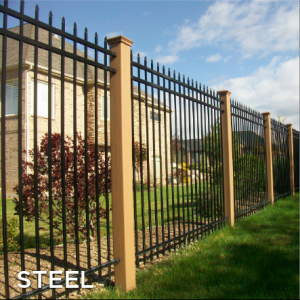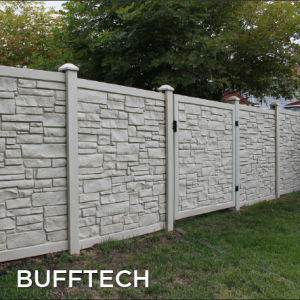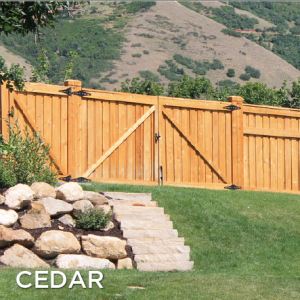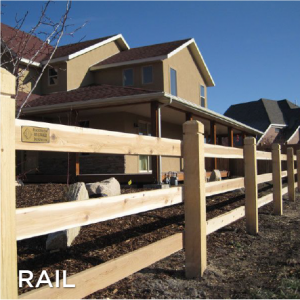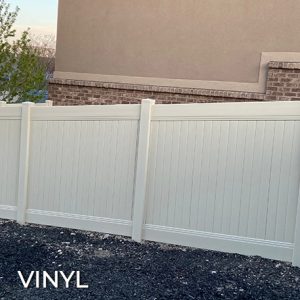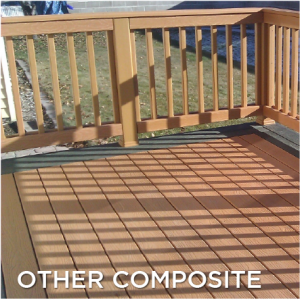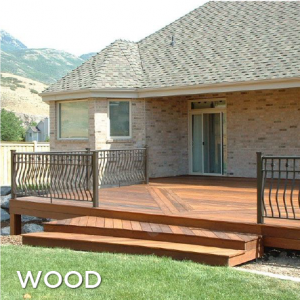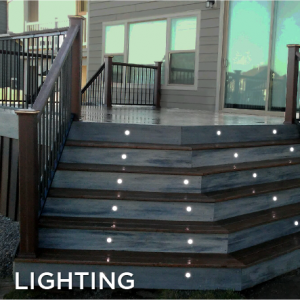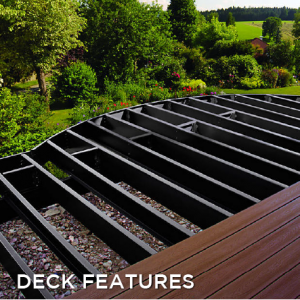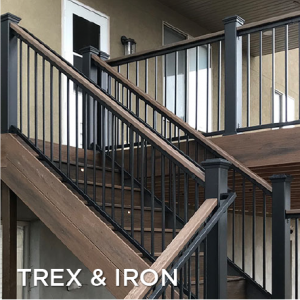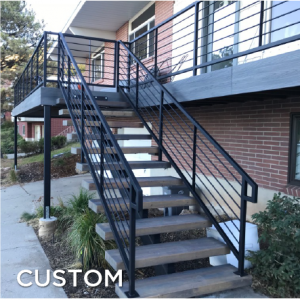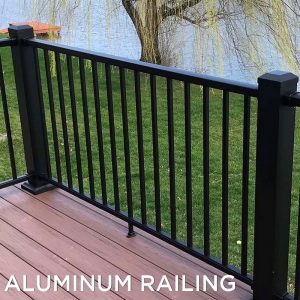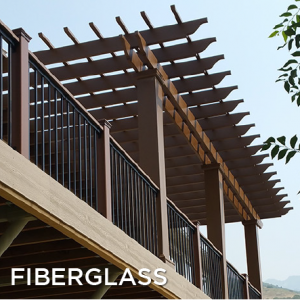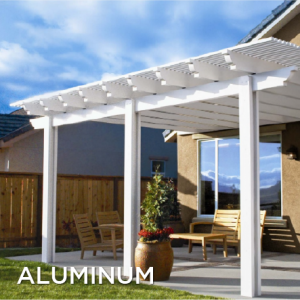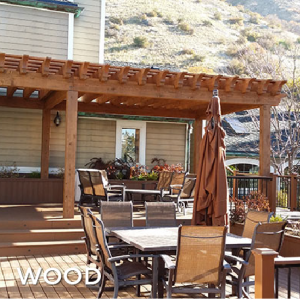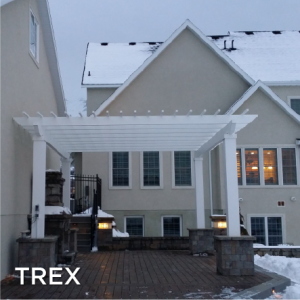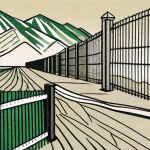Lehi Aluminum Railing and Fence Materials
Aluminum is a versatile material that is commonly used in various industries. When it comes to fencing and railing, aluminum provides numerous benefits that make it an ideal choice for both residential and commercial applications.
Understanding Aluminum as a Material
Before diving into the advantages of using aluminum in fencing and railing, it is crucial to have a basic understanding of its properties.
Aluminum, symbolized by the chemical element Al, is a lightweight metal that is highly resistant to corrosion. It is the third most abundant element on Earth’s crust, making up about 8% of its weight. This abundant availability contributes to its widespread use in various industries.
One of the key properties of aluminum is its excellent strength-to-weight ratio. This means that it is both strong and lightweight, making it an ideal material for structures that require durability without adding unnecessary weight. This property is particularly advantageous in fencing and railing projects, where the material needs to withstand external forces while remaining easy to work with.
In addition to its strength, aluminum is non-magnetic and non-combustible. This makes it a safe option for outdoor structures, as it does not attract or interfere with magnetic fields and is not easily ignited by fire. These characteristics contribute to its use in applications where safety is a priority.
Properties of Aluminum
Aluminum is a lightweight metal that is highly resistant to corrosion. It has excellent strength-to-weight ratio, making it durable yet easy to work with. Additionally, aluminum is non-magnetic and non-combustible, making it a safe option for outdoor structures.
Furthermore, aluminum has a high thermal conductivity, meaning it can efficiently transfer heat. This property makes it suitable for applications where heat dissipation is important, such as in electronic devices or heat sinks.
Another notable property of aluminum is its high reflectivity. It reflects both visible and non-visible light, making it useful in applications where light reflection is desired, such as in mirrors or reflective coatings.
Aluminum also has excellent electrical conductivity, second only to copper among common metals. This property makes it suitable for electrical wiring and conductive applications.
Benefits of Using Aluminum in Fencing and Railing
There are several reasons why aluminum is a preferred material for fencing and railing projects:
- Durability: Aluminum is known for its longevity. It does not rust or rot, making it ideal for outdoor applications where it is exposed to harsh weather conditions. This durability ensures that fences and railings made from aluminum can withstand the test of time, requiring minimal repairs or replacements.
- Low Maintenance: Unlike some other materials, aluminum requires minimal upkeep. It does not need to be repainted or sealed regularly. This low maintenance requirement saves both time and money for homeowners and businesses.
- Customizable: Aluminum can be easily fabricated into various designs, allowing homeowners and designers to create unique and visually appealing fences and railings. Its malleability allows for intricate detailing and customization, enabling the creation of personalized and aesthetically pleasing structures.
- Versatility: Aluminum can be used in different styles of fencing, including picket, privacy, and ornamental designs. It is also suitable for both residential and commercial properties. This versatility allows for the use of aluminum in various architectural styles and applications, catering to different preferences and needs.
- Environmentally Friendly: Aluminum is a sustainable material as it can be recycled repeatedly without losing its properties. Recycling aluminum requires significantly less energy compared to producing it from raw materials, making it an environmentally conscious choice. By using aluminum in fencing and railing projects, individuals and businesses contribute to the conservation of natural resources and the reduction of waste.
Types of Aluminum Railing and Fence Materials
When it comes to choosing aluminum materials for your railing and fence, there are various options available:
Aluminum Railing Materials
Aluminum railings can be constructed using extruded or cast aluminum. Extruded aluminum railings are more commonly used due to their strength and durability. They provide a sleek and modern look that complements any architectural style.
Aluminum Fence Materials
Aluminum fences are available in different styles, including flat top, spear top, and picket. The aluminum fence materials are lightweight yet sturdy, ensuring both security and aesthetics for your property.
Factors to Consider When Choosing Aluminum Railing and Fence Materials
Before finalizing your decision, there are a few factors that you should consider:
Durability and Maintenance
Aluminum railings and fences are known for their durability. They require minimal maintenance and can withstand various weather conditions, including heavy rain and UV exposure. Regular cleaning is usually sufficient to keep them looking their best.
Aesthetics and Design
When selecting aluminum railing and fence materials, it is important to consider the overall design aesthetic of your property. Aluminum can be customized to match various architectural styles, offering both beauty and functionality.
Cost-effectiveness
While aluminum may have a slightly higher upfront cost compared to some other materials, its long-term cost-effectiveness should not be underestimated. The low maintenance requirements and durability of aluminum ensure that you won’t have to spend additional money on repairs or replacements in the future.
Installation Process for Aluminum Railing and Fences
Installing aluminum railings and fences can be done with the right tools and knowledge. Here are the general steps involved:
Preparing for Installation
Prior to installation, ensure that you have measured the area accurately and obtained the necessary permits, if required. Clear the area of any obstacles that may hinder the installation process.
Steps in Installing Aluminum Railings
The installation of aluminum railings typically involves the following steps:
- Marking and positioning the railing posts.
- Securing the posts to the ground or the structure using concrete or mounting brackets.
- Attaching the top and bottom rails to the posts, ensuring they are level and plumb.
- Installing the pickets and any additional decorative components.
Steps in Installing Aluminum Fences
The process of installing aluminum fences is similar to that of railings with slight variations:
- Determining the placement of the fence posts.
- Digging post holes and inserting the posts, ensuring they are secure.
- Attaching the rails to the posts and ensuring they are level.
- Installing the fence panels and any gates.
Maintaining Your Aluminum Railing and Fence
To keep your aluminum railing and fence looking great for years to come, proper maintenance is essential:
Cleaning and Care Tips
Regularly clean your aluminum railing and fence using mild soap and water. Avoid using abrasive cleaners or harsh chemicals that may damage the surface. Inspect for any signs of damage or loose components and address them promptly.
Common Repair Issues and Solutions
If you encounter any repair issues, such as loose pickets or rust spots, it is best to consult a professional. They can provide appropriate solutions to ensure the structural integrity and visual appeal of your aluminum railing and fence.
In conclusion, aluminum railing and fence materials offer a wide range of benefits, including durability, low maintenance, and customizable designs. Consider your specific needs and preferences when choosing the right materials for your project. With proper installation and maintenance, your aluminum railing and fence will stand the test of time and enhance the beauty of your property.
